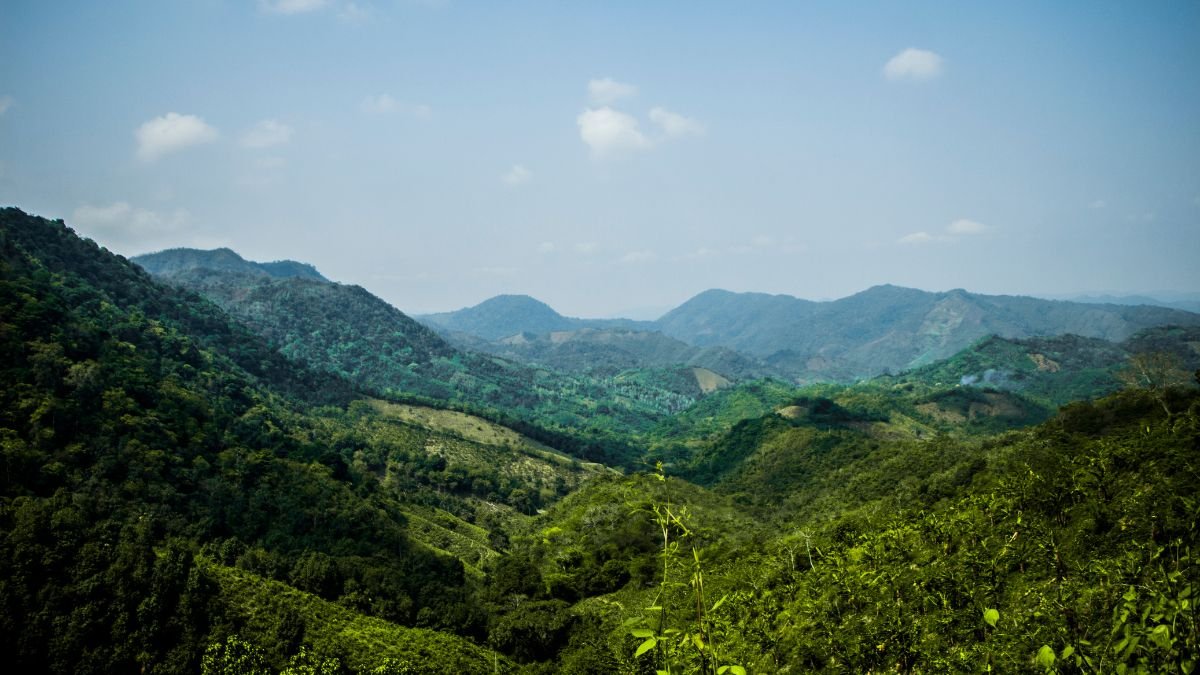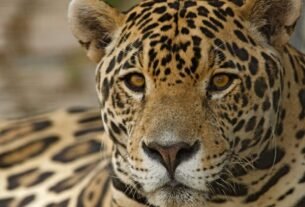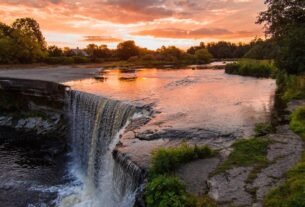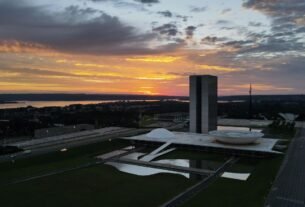Introduction
Have you ever wondered where the line between myth and reality blurs? Nestled in the heart of Brazil, the Serra do Roncador Mato Grosso is a place where legends come alive. Spanning 800 kilometers, this mountain range stretches from Barra do Garças to Serra do Cachimbo, offering a landscape that captivates adventurers and dreamers alike.
Its rich biodiversity and unique ecosystems contribute to its allure, drawing nature enthusiasts and researchers eager to study its flora and fauna. The area is often enveloped in a mystical atmosphere, with fog rolling over the peaks, enhancing its enchanting reputation.
This region is uniquely positioned between four major rivers: Xingu, Kuluene, Araguaia, and Rio das Mortes. Its name, “Roncador,” comes from the eerie, low rumbling sounds created by the wind against its rock walls, resembling a giant’s snore. This natural phenomenon has inspired countless tales and legends, with locals attributing the sounds to spirits or ancient beings that inhabit the mountains.
With peaks reaching up to 700 meters and canyon-like formations, it’s a geographical marvel that not only serves as a natural barrier but also as a cultural landmark, steeped in history and folklore.
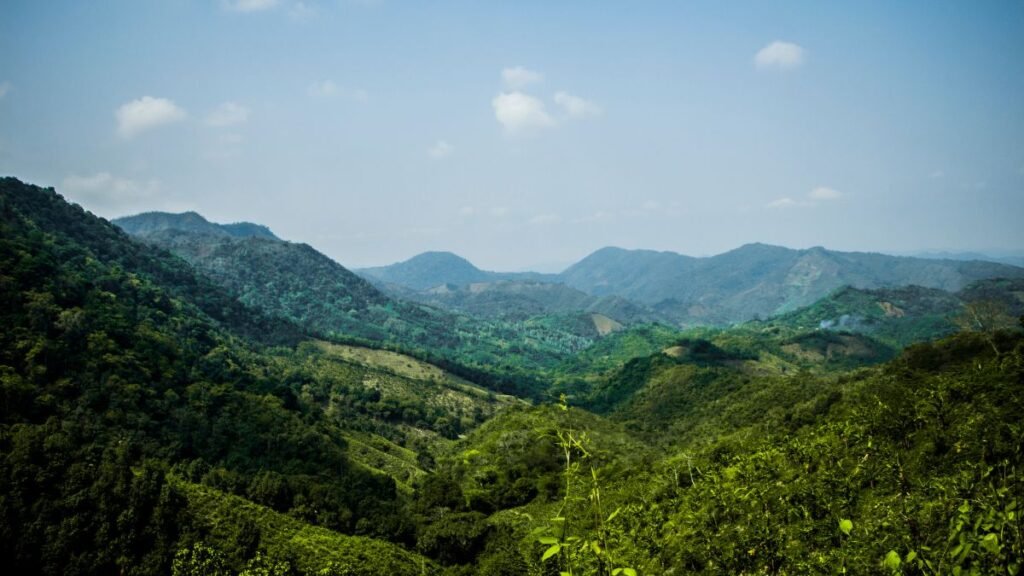
But the Serra do Roncador, Mato Grosso, is more than just a natural wonder. It’s a gateway to the Amazon rainforest, despite being located in the Cerrado biome, which is characterized by its unique vegetation and ecosystems. This unique positioning creates a rich biodiversity that captivates both scientists and nature lovers alike, offering a habitat for countless species of flora and fauna that thrive in this diverse environment.
For decades, it has been a spiritual hub for UFO researchers and seekers of ancient civilizations, drawn by the area’s mysterious energy and the many reports of unexplained phenomena that have been documented over the years. The region is steeped in stories of encounters with extraterrestrial beings and ancient wisdom, further adding to its allure.
Its mystique continues to draw those who dare to explore the unknown, inviting adventurers and scholars to delve into its secrets, hoping to uncover the truth behind the legends that have surrounded this enigmatic landscape for generations. Many visitors leave with a sense of wonder and a deep connection to the natural world, often describing their experiences as transformative and enlightening.
Key Takeaways
- The Serra do Roncador Mato Grosso spans 800 kilometers through the state of Mato Grosso.
- It is bordered by four major rivers: Xingu, Kuluene, Araguaia, and Rio das Mortes.
- The name “Roncador” originates from the wind’s snore-like sounds against the rocks.
- Its elevation peaks at 700 meters, featuring stunning canyon-like formations.
- It serves as a gateway to the Amazon rainforest, despite being located in the Cerrado biome.
- The region is a spiritual hotspot for UFO enthusiasts and those seeking ancient civilizations.
The Mystical Allure of Serra do Roncador Mato Grosso
Some places on Earth hold secrets that defy explanation. The Serra do Roncador is one such place, where legends of ancient civilizations, UFO sightings, and mysterious portals converge. This region is not just a geographical wonder but a spiritual magnet for those seeking answers to the unknown.
Its landscapes are imbued with a sense of magic, where the air feels charged with energy and the very ground seems to whisper stories of the past. Many who visit report profound experiences, feeling as though they are tapping into a deeper consciousness that connects them to the universe.
The Legend of Percy Harrison
In 1925, British explorer Percy Fawcett vanished while searching for descendants of the lost Atlantean civilization. His quest led him deep into the heart of Brazil, where he believed a hidden city lay beneath the earth, a city filled with advanced knowledge and technology that had been lost to time.
Fawcett’s disappearance remains one of the greatest unsolved mysteries of the 20th century, captivating the minds of historians and adventurers alike who are drawn to the allure of the unknown.
Local legends suggest that Fawcett may have stumbled upon an entrance to subterranean cidades, cities said to be powered by inner sun technology. This concept intrigues many who ponder the possibility of ancient civilizations possessing knowledge far beyond our current understanding.
These tales continue to fuel the imagination of adventurers and researchers alike, inspiring countless expeditions into the dense jungles of Brazil as they seek to uncover the truth behind Fawcett’s fate and the mysteries that lie beneath the surface.
The Arco da Pedra: A Portal to Other Worlds
The Arco da Pedra, a massive rock formation, is considered one of Earth’s most energetic vortex sites. At its center lies a 10-meter diameter crystal “mirror,” believed to have been used by the Xavante ancestors for spiritual rituals, symbolizing a connection between the physical and spiritual realms. This crystal is thought to harness and amplify the earth’s natural energies, serving as a focal point for the tribe’s ceremonies aimed at healing and guidance.
Esoteric theories suggest that during specific planetary alignments, this site becomes a portal to other dimensions, enabling the possibility of communication with ancestral spirits or otherworldly beings. Modern paranormal researchers have reported thermal imaging anomalies near the area, adding to its mystique and suggesting that unusual energy fluctuations may occur at these times, further enhancing the belief that the Arco da Pedra is a gateway to realms beyond our comprehension.
The Bico da Serra: Guardians of the Land
The Bico da Serra rock formation is a natural wonder that appears to depict dual guardians—an indigenous warrior and a saint. This optical illusion has led to beliefs that these figures protect the land and its secrets, serving as spiritual sentinels that embody the rich history and traditions of the region.
The indigenous warrior symbolizes strength and resilience, while the saint represents guidance and protection, creating a harmonious balance between the earthly and the divine. This duality resonates deeply with local folklore, where stories of these guardians are passed down through generations, enriching the cultural tapestry of the area.
Local Xavante tribes guard the entrances to alleged tunnels leading to underground cidades. These tunnels are said to connect to a vast network beneath the earth, where ancient technologies and hidden knowledge reside, believed to be remnants of a lost civilization that once thrived in harmony with nature.
The tribes hold sacred rituals to honor these tunnels, reinforcing their connection to the land and its mysteries. Elders often recount tales of explorers who ventured into these depths, seeking wisdom and enlightenment, only to emerge transformed by their experiences.
“The Serra do Roncador is a place where the past and the present merge, offering glimpses into a world beyond our understanding.”
| Feature | Description | |
|---|---|---|
| Percy Fawcett | Disappeared in 1925 searching for Atlantean descendants. | |
| Arco da Pedra | Energetic vortex site with a 10m crystal “mirror.” | |
| Bico da Serra | Rock formation showing dual guardians | Rock formation showing dual guardians. |
Natural Wonders and Attractions
From cascading waterfalls to ancient caves, this place is a treasure trove of wonders. The cachoeiras (waterfalls) are a highlight, offering crystal-clear águas that invite visitors to take a refreshing banho. These stunning waterfalls are not only beautiful but also integral to the local ecosystem, providing vital habitats for a wide range of species. The region’s unique formações (rock formations) and hidden caves add to its allure, making it a must-visit for nature enthusiasts who seek adventure and tranquility alike.
Cachoeiras: Crystal Clear Waterfalls
The cachoeiras here are nothing short of spectacular. The Cachoeira do Éden, with its impressive 35-meter cascade, is a favorite among visitors. Surrounded by lush greenery and vibrant flora, it’s the perfect spot for a swim or a picnic, where families and friends can gather to enjoy the natural beauty. The águas are not only refreshing but also therapeutic, thanks to their mineral-rich properties, which are believed to promote health and well-being.
Seven major waterfall systems dot the região, each with its own charm and distinct features that draw in adventurers and nature lovers. Rare amphibian species thrive in the microclimates created by these falls, contributing to the area’s ecological significance and biodiversity. The sounds of rushing water and the sight of shimmering droplets create a serene atmosphere, making it an ideal escape from the hustle and bustle of everyday life. Always be cautious of hidden currents when swimming in natural pools, as safety should be a priority while enjoying these breathtaking sites.
Gruta Azul: The Blue Cave
The Gruta Azul is a mystical cave known for its blue-tinted star-shaped paintings. These ancient artworks are believed to depict celestial events, offering a glimpse into the lives of early inhabitants. The cave’s acoustic properties amplify even the softest whispers, creating an otherworldly experience.
Visitors often describe the entrance (or entrada) as a portal to another world. The cave’s cool, mineral-rich águas are said to have healing properties, making it a popular spot for those seeking rejuvenation.
Dedo de Deus: A Majestic Rock Formation
The Dedo de Deus is a towering rock formation with a 200-meter vertical cliff face. Indigenous petroglyphs adorn its surface, telling stories of ancient civilizations. Hiking trails here are challenging but reward adventurers with panoramic views of the região.
This formação is a testament to the power of wind erosion, shaped over millennia. It’s a favorite among climbers and photographers alike, offering endless opportunities for exploration and discovery.
“The natural wonders of this área are a reminder of Earth’s timeless beauty and the mysteries it holds.”
| Attraction | Key Features |
|---|---|
| Cachoeiras | Seven major systems, therapeutic águas, rare species |
| Gruta Azul | Blue-tinted paintings, acoustic properties, healing águas |
| Dedo de Deus | 200m cliff, indigenous petroglyphs, challenging trails |
Practical Travel Tips for Serra do Roncador Mato Grosso
Exploring this area demands both curiosity and practical planning. Whether you’re drawn by its legends or natural beauty, knowing the logistics will make your voyage smoother and more enjoyable. Here’s what you need to know before you go. The first step is to research the best times to visit, as each season offers unique experiences.
Consider what activities you want to prioritize, whether it’s hiking, photography, or simply soaking in the stunning landscapes. Additionally, familiarize yourself with local customs and safety tips to enhance your journey. Packing appropriately for the weather and terrain will also ensure that you can fully enjoy all that this breathtaking region has to offer.
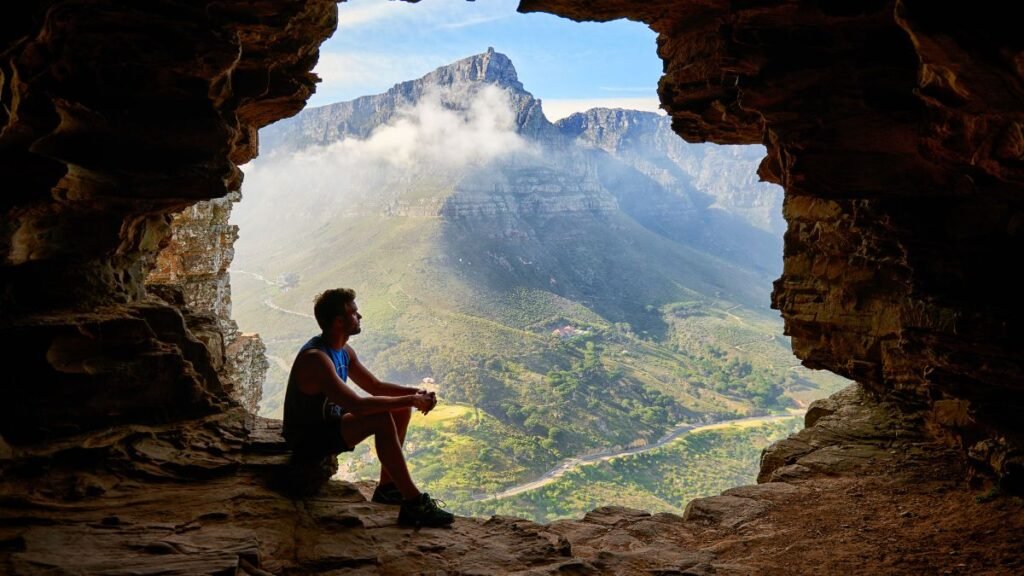
How to Get There
Reaching this destination is easier than you might think. Azul Airlines offers direct flights from Cuiabá and Goiânia to Barra Garças, the gateway to the region. These flights are not only convenient but also provide stunning aerial views of the landscape, setting the stage for your adventure. From there, a 5-hour transfer will take you to the heart of the area, and it’s advisable to book this transfer in advance to ensure a smooth arrival.
For those driving, 4×4 vehicles are recommended due to the rugged interior roads that can be challenging, especially in certain weather conditions. The scenic drive can be quite rewarding, but be prepared for potential obstacles such as potholes and unpaved sections.
Public transportation is limited, so planning your access in advance is essential. It’s wise to consult local maps and possibly download offline navigation apps, as signal coverage can be spotty in remote areas. Always check road conditions, especially during the rainy season, when some routes may become impassable or require extra caution.
When to Visit
The dry season, from May to September, is ideal for exploring waterfalls and trails. During this period, the weather is generally dry and sunny, making it perfect for outdoor activities. April to June offers lush landscapes, with vibrant greenery and blooming flora, while August and September provide clearer skies for passeios and photography, allowing for stunning visuals of the natural beauty that surrounds you.
Keep in mind that the nearest trauma center is 5 hours away from remote trail areas, which can be quite a distance in case of an emergency. Therefore, travel insurance and anti-malarial prophylaxis are highly recommended for jungle regions, as they can provide peace of mind and essential coverage for unexpected health issues that may arise during your adventures.
What to Pack
Packing smart is crucial for a comfortable trip. Essential items include waterproof hiking boots, UV-protection clothing, and a water filtration system to ensure you stay hydrated with clean water. Additionally, consider bringing a lightweight rain jacket, as the weather can be unpredictable, and a first aid kit for minor injuries. A satellite communicator is also advised for safety in remote areas, allowing you to stay connected in case of emergencies.
Cash is king here, as rural ATMs are scarce and may not always be functional. Carry at least BRL 500 in small denominations to cover your expenses, including food, transportation, and local crafts. It’s wise to have some coins on hand for small purchases, as larger bills may not be accepted everywhere. Don’t forget your yellow fever vaccination proof, as it’s required for entry into certain parts of the state.
Cultural & Culinary Experiences
Every bite of food here tells a story of tradition and heritage. The região is a melting pot of indigenous and contemporary influences, offering a unique blend of flavors and experiences. From signature dishes to cultural workshops, there’s something for everyone to explore.
The local cuisine is not just about the food itself; it is a reflection of the community’s history and the ingredients that have been sourced from the surrounding land for generations. Each meal serves as a bridge connecting visitors to the rich tapestry of cultural narratives that define this vibrant area.
One of the standout dishes is Peixe na Folha de Bananeira, fish steamed in banana leaves. This method locks in moisture and infuses the fish with a subtle, earthy flavor, making it a favorite among both locals and visitors. The technique is often accompanied by a zesty sauce made from regional herbs and spices, enhancing the dish’s appeal.
Another local favorite is carne de Sol, sun-dried beef, which remains a staple in the city’s cuisine. This dish is traditionally served with sides like mashed cassava and a fresh tomato salad, showcasing the simplicity and depth of flavors that characterize the area’s culinary landscape. These dishes reflect the region’s connection to the terrain and its resources, illustrating how local ingredients and traditional cooking methods come together to create memorable dining experiences.
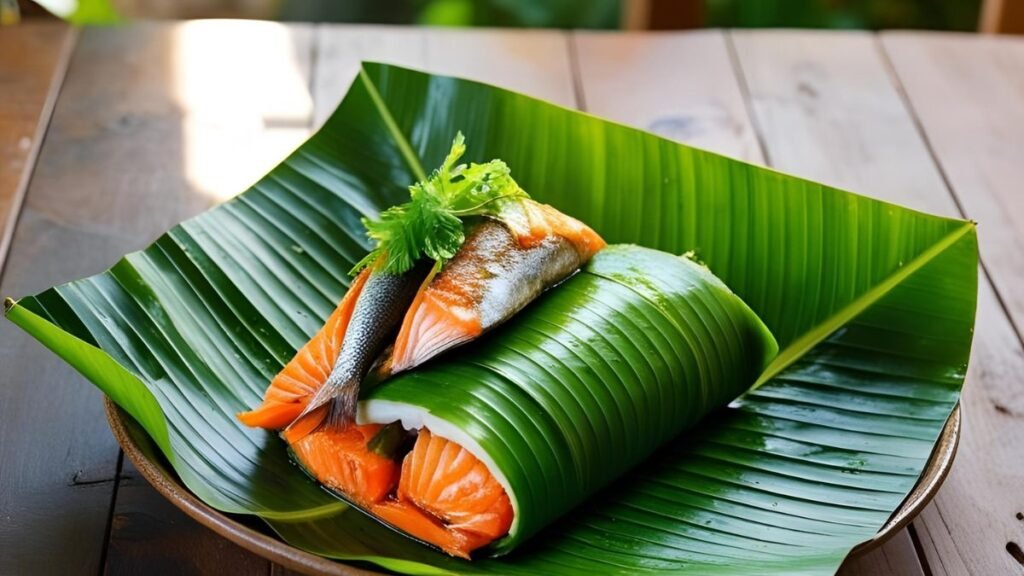
For a deeper cultural immersion, the Xavante tribe offers workshops where visitors can learn traditional basket-weaving techniques. These workshops provide insight into the tribe’s intricate craftsmanship and their relationship with the land. Blue corn, a significant element in local spirituality, is often used in these creations, symbolizing life and fertility.
When dining out, here are three authentic spots in Barra do Garças to try:
- Restaurante do Zé: Known for its fresh river fish and traditional recipes.
- Casa da Carne de Sol: A must-visit for the best sun-dried beef dishes.
- Sabores da Terra: Offers a modern twist on indigenous cuisine.
Respect for sacred areas is paramount. Photography is prohibited in certain zones to preserve the spiritual integrity of these sites. Visitors are encouraged to engage with the culture respectfully and mindfully.
Every July, the região comes alive with the Roncador Mystic Festival. This event celebrates the area’s legends, spirituality, and traditions. It’s a time when locals and visitors alike gather to honor the mysteries of the land. For more on the Xavante rituals, visit this link.
“The culture of this região is a bridge between the past and the present, offering a glimpse into the soul of the land.”
Conclusion: Embrace the Magic of Serra do Roncador Mato Grosso
The allure of Serra Roncador lies in its blend of mystery and natural beauty. From the Arco da Pedra’s energetic vortex to the Bico da Serra’s guardian figures, each site holds symbolic meaning. Guided tours are essential for uncovering hidden locations and ensuring a safe journey.
Accessibility is improving, with new airport routes making it easier to explore this mystical mundo. Whether you’re a spiritual seeker or an adventure traveler, this region offers unforgettable experiences. Always prepare for the wilderness with proper gear and safety measures.
Looking ahead, an upcoming observatory project will enhance the viewing of celestial events. The Serra Roncador invites you to embrace its magic and discover the wonders of this unique meio. Learn more Animals in pantanal.
FAQ
What makes the Serra do Roncador so mystical?
The region is steeped in legends, including tales of hidden cities, portals to other dimensions, and ancient guardians. Its unique natural formations and spiritual energy contribute to its mystical allure.
Who was Percy Harrison, and why is he significant to this area?
Percy Harrison was a British explorer who searched for a lost city in the region. His expeditions and theories have added to the mystique and intrigue surrounding the area.
What is the Arco da Pedra, and why is it referred to as a portal?
The Arco da Pedra is a natural rock arch believed by locals to be a gateway to other worlds. Its striking appearance and spiritual significance make it a must-see.
Are there any notable waterfalls in the area?
Yes, the region is home to several cachoeiras, or waterfalls, known for their crystal-clear waters. These spots are perfect for swimming and relaxation.
What is the Gruta Azul, and why is it famous?
The Gruta Azul, or Blue Cave, is a stunning cave with vibrant blue waters. Its beauty and serene atmosphere attract visitors from around the world.
How do I get to the Serra do Roncador?
The most common route is through Barra do Garças, which is accessible by road. From there, local guides can help navigate the trails and attractions.
When is the best time to visit?
The dry season, from May to September, is an ideal time for exploration. The weather is pleasant, and the trails are more accessible during this time.
What should I pack for a trip to this region?
Bring sturdy hiking shoes, lightweight clothing, sunscreen, and plenty of water. A camera and a sense of adventure are also essential!
Are there any cultural experiences to enjoy in the area?
Yes, visitors can explore local traditions, savor regional cuisine, and discover the indigenous cultures that have shaped the region’s history.

